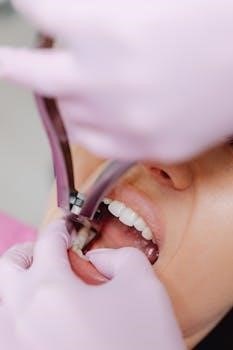post operative instructions for tooth extraction
Just had a tooth pulled? Don't panic! Get simple, clear post operative instructions for tooth extraction and heal like a champ. We've got you covered!
Initial Post-Extraction Care
Following a tooth extraction, your dentist will place gauze over the site to control bleeding. You must bite down firmly on this gauze for 30 to 45 minutes. This pressure helps to form a blood clot, which is essential for proper healing.
It’s crucial to rest for at least the first 24 hours post-extraction. Limit physical activity to aid in recovery. Avoid strenuous exercise, which could disrupt the healing process and lead to complications. Take it easy for the rest of the day.
Gauze Application and Biting
Immediately following your tooth extraction, a dentist or dental surgeon will place a sterile gauze pad directly over the extraction site. This is a crucial first step in managing post-operative bleeding and initiating the healing process. It is vital that you bite down firmly and consistently on the gauze. This direct pressure helps to stop the bleeding and facilitates the formation of a blood clot, which is essential for proper healing. The duration for which you need to bite on the gauze is typically between 30 to 45 minutes. Avoid changing the gauze too frequently as this may disturb the clot formation. If bleeding continues after this period, replace the gauze with a fresh pad and continue applying pressure for an additional 30 minutes. If the bleeding is excessive, then you must contact your dentist. Remember, do not speak unnecessarily while biting down because this may affect the formation of the blood clot. Proper adherence to these guidelines will contribute significantly to a smooth and uncomplicated recovery.
Rest and Limited Activity
After undergoing a tooth extraction, prioritizing rest is paramount for a successful recovery. Plan to take it easy for the remainder of the day, minimizing any form of physical exertion. Your body needs time to heal, and strenuous activities can impede this process. It’s advisable to rest for at least the first 24 hours post-extraction. Avoid any rigorous exercise, heavy lifting, or any activity that could elevate your heart rate or blood pressure. This precaution helps prevent dislodging the blood clot and reduces the risk of post-operative complications, such as prolonged bleeding or dry socket. Ideally, you should rest at home, avoiding unnecessary travel or errands. It’s beneficial to arrange for someone to assist you with tasks that might require physical effort. Listen to your body and allow yourself ample time to recover. A relaxed and restful environment promotes healing and contributes to a smoother overall experience. Remember, adequate rest is an essential part of the recovery process.
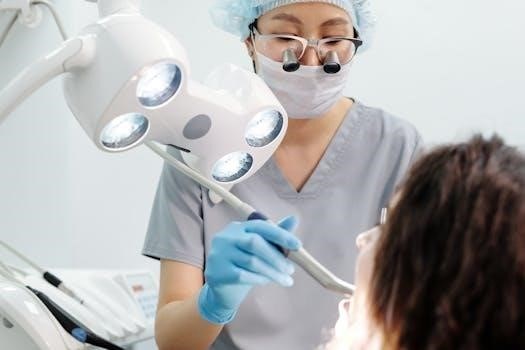
Managing Swelling and Pain
To reduce swelling, apply an ice pack to your cheek near the extraction site for 10 minutes. Then, remove it for 5 minutes. Repeat this cycle as needed. Cold compresses can help.
Over-the-counter pain relievers, such as ibuprofen or acetaminophen, can be taken to manage discomfort. Follow the dosage instructions provided on the packaging. Consult your dentist if pain persists.
Ice Pack Application
Applying an ice pack is a crucial step in managing post-extraction swelling. To create an effective ice pack, fill a sealable plastic bag with ice cubes. Ensure the bag is securely closed to prevent any leakage. Then, wrap the ice-filled bag in a thin, clean towel or cloth. This layer of fabric will protect your skin from direct contact with the ice, preventing potential frostbite or discomfort. Gently place the wrapped ice pack on your cheek, directly over the area where the tooth was extracted. Hold the ice pack in place for about 10 minutes, allowing the cold temperature to reduce inflammation and swelling. After 10 minutes, remove the ice pack and allow your skin to rest for at least 5 minutes before reapplying it. You can repeat this cycle multiple times throughout the day, especially within the first 24 to 48 hours following the extraction, to effectively minimize swelling and promote a more comfortable healing process. Remember to be consistent and patient with this method for best results.
Over-the-counter Pain Medication
Managing pain after a tooth extraction is essential for a comfortable recovery, and over-the-counter pain medications are often effective in providing relief. Options such as ibuprofen or acetaminophen can help alleviate discomfort and reduce inflammation associated with the procedure. It’s crucial to follow the dosage instructions provided on the medication packaging or as recommended by your dentist. Do not exceed the suggested daily limit, as overconsumption can lead to adverse health effects. These medications are most effective when taken as soon as you begin to feel pain, rather than waiting until the pain becomes severe. Usually, pain medication should be taken with food or a full glass of water to minimize any stomach discomfort. If the pain persists or worsens despite taking over-the-counter medications, contact your dentist. They might recommend stronger prescription pain relievers or investigate potential complications. Remember, consistent and timely use of pain medication can make your recovery significantly more manageable and comfortable. Always prioritize your well-being and seek professional advice if pain levels become unmanageable.
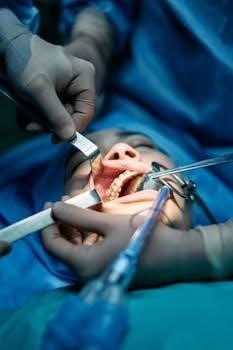
Oral Hygiene Practices
After extraction, gently brush teeth, avoiding the surgical site. Brush the tops of teeth near the extraction area. Continue to keep your mouth clean. Do not spit forcefully, instead let the water gently fall out.
Use the prescription mouth rinse as directed by your dentist. This will help keep bacteria levels low. It is important to keep the area clean to avoid infection and promote healing.
Gentle Brushing Techniques
Maintaining oral hygiene after a tooth extraction is crucial, but it requires a gentle approach. Immediately following the procedure, you should avoid brushing directly at the extraction site. Instead, focus on cleaning the other areas of your mouth. When brushing near the extraction site, use a very soft-bristled toothbrush and apply minimal pressure. Gently brush the surfaces of the teeth, but avoid the area where the tooth was removed. Remember that the goal is to remove food particles and plaque without disturbing the forming blood clot. Continue to brush your teeth as normal, keeping your mouth as clean as possible, but be very careful around the surgical site. Be extremely gentle when brushing close to the extraction area. You can use a gentle, circular motion, but avoid excessive pressure. This will help prevent irritation and promote better healing. Do not use an electric toothbrush until the area has healed.
Prescription Mouth Rinse Use
Your dentist might prescribe a special mouth rinse following your tooth extraction to help prevent infection and aid in healing. This prescription-strength rinse typically contains an antibacterial agent designed to reduce the risk of complications. It is essential to use this mouth rinse as directed by your dentist. Generally, you’ll be instructed to use it several times a day, often after meals and before bed. When rinsing, gently swish the solution around your mouth, making sure to reach all areas, including the extraction site. Avoid forceful rinsing or spitting, as these actions could dislodge the blood clot. Instead, let the rinse gently flow out of your mouth. Continue using the prescribed mouth rinse for the entire duration recommended by your dentist, even if you feel like you are healing. This ensures that the area remains clean and free from harmful bacteria.
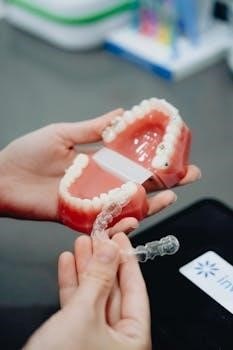
Dietary Recommendations
Following a tooth extraction, stick to a soft food diet. Choose foods like yogurt, soups, and mashed potatoes. This minimizes chewing and reduces irritation to the extraction site. Avoid hard or crunchy foods.
Soft Food Diet
After undergoing a tooth extraction, adopting a soft food diet is paramount to ensuring proper healing and minimizing discomfort. This dietary adjustment is crucial because the extraction site is particularly vulnerable to irritation and potential complications during the initial recovery phase. Opting for soft foods reduces the need for extensive chewing, which can put unnecessary pressure on the surgical area and potentially dislodge the forming blood clot, a vital component for the healing process. Consider incorporating foods such as mashed potatoes, yogurt, smooth soups, applesauce, and well-cooked pasta into your meals. These options are gentle on the mouth and require minimal effort to consume. Furthermore, these foods are usually easier to digest, reducing any strain on your body during recovery; It’s important to avoid hard, crunchy, or sticky foods that could get lodged in the extraction site or cause discomfort. Remember, the goal is to allow the extraction site to heal undisturbed, and a soft food diet is an integral part of achieving that.
Avoiding Hot and Spicy Foods
Following a tooth extraction, it is imperative to avoid hot and spicy foods to facilitate optimal healing and prevent potential complications. Hot foods can increase blood flow to the extraction site, potentially causing the blood clot to dislodge, which is crucial for proper healing. This can lead to a painful condition known as dry socket, where the bone is exposed, prolonging the healing process. Spicy foods, on the other hand, can irritate the sensitive tissues around the extraction area, causing discomfort and inflammation. The chemical compounds in spicy ingredients can exacerbate pain and slow down recovery. Therefore, it is best to stick to lukewarm or cool foods and beverages to minimize any risks of irritation or complications. Opt for milder flavors and avoid anything that might cause a burning or tingling sensation in your mouth. This precaution is vital in the initial days after the procedure, allowing your mouth to heal undisturbed and ensuring a smoother recovery. Remember, gentle care during this time will significantly contribute to a successful healing outcome.
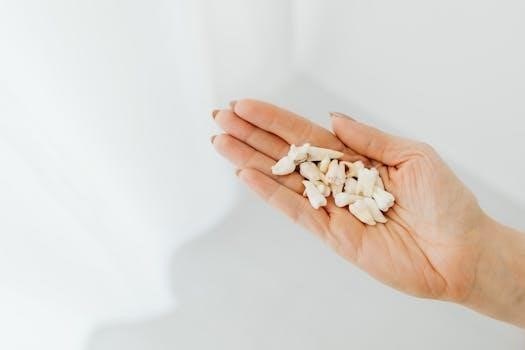
Things to Avoid
Avoid any strenuous exercise for a few days after your tooth extraction; Physical activity can increase bleeding and swelling, hindering the healing process. Rest is essential for recovery.
Refrain from consuming carbonated and alcoholic beverages following your extraction. These drinks can irritate the surgical site and impede proper healing. Stick to water and other recommended liquids.
Strenuous Exercise
It is imperative to avoid strenuous exercise for at least the first 24 to 72 hours following a tooth extraction. Engaging in physical activities that elevate your heart rate and blood pressure can significantly increase the risk of post-operative complications. Increased blood flow to the extraction site can disrupt the formation of a crucial blood clot, which is essential for proper healing. This disruption may lead to prolonged bleeding, heightened pain, and an increased risk of developing a dry socket, a painful condition that occurs when the blood clot is dislodged. Therefore, activities such as heavy lifting, running, intense workouts, and any sport that requires significant exertion must be strictly avoided. Opt for rest and relaxation during the initial recovery phase to allow your body to heal effectively. Light walking may be permissible, but only if it doesn’t cause discomfort. Remember that prioritizing rest contributes greatly to a smooth and successful recovery process, and it’s essential to heed your dentist’s instructions regarding physical limitations.
Carbonated and Alcoholic Beverages
After a tooth extraction, it’s crucial to abstain from carbonated and alcoholic beverages for at least the first 24 to 72 hours, if not longer, depending on your dentist’s specific recommendations. Carbonated drinks, such as sodas and sparkling water, can irritate the sensitive extraction site. The bubbles can potentially dislodge the blood clot, leading to a painful condition known as a dry socket, which significantly delays healing. Furthermore, the acidity in many carbonated drinks can also cause discomfort and hinder the healing process. Similarly, alcoholic beverages should be strictly avoided during this period. Alcohol can interfere with the body’s natural healing abilities and can also interact negatively with any pain medications you may be taking. Additionally, alcohol can increase bleeding and swelling, which will further complicate the recovery process. It is advisable to stick to water, milk, or other non-carbonated, non-alcoholic beverages during the initial healing period. These choices promote hydration and do not interfere with the delicate healing of the extraction site.

